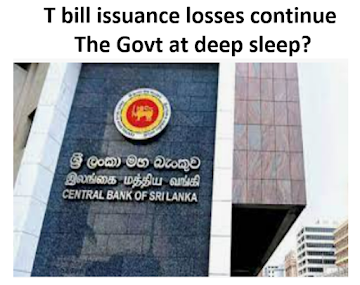Why CB hikes T bill rates while cutting its policy rates? Who is responsible for the loss to public funds?

At the first auction held on 12 July after the second policy rate cut of 2% on 5 July, the CB raised T bill yield rates by about 1%. This is a contradiction to the monetary policy easing cycle that commenced on 31 May. However, only Rs. 99.7 bn out of Rs. 160 bn sought was raised from the auction. This article shows how T bill rates increase continued on the next auction too, raising public concerns over the CB's present interest rates policy and resulting cost to public funds that suffer bankruptcy due to the CB mismanagement of national debt stock. 19 July T bill auction The CB at the auction held on 19 July also raised T bill rates by 0.31%-0.91%. At such higher rates, Rs. 75.5 bn against the funding requirement of Rs. 160 bn was raised (see CB's press releases below). As a result, the cumulative increase in T bill rates at the last two auctions is about 1.5%. This an undisputed loss to public funds as against significant monetary easing cycle on the table with the advice of...




